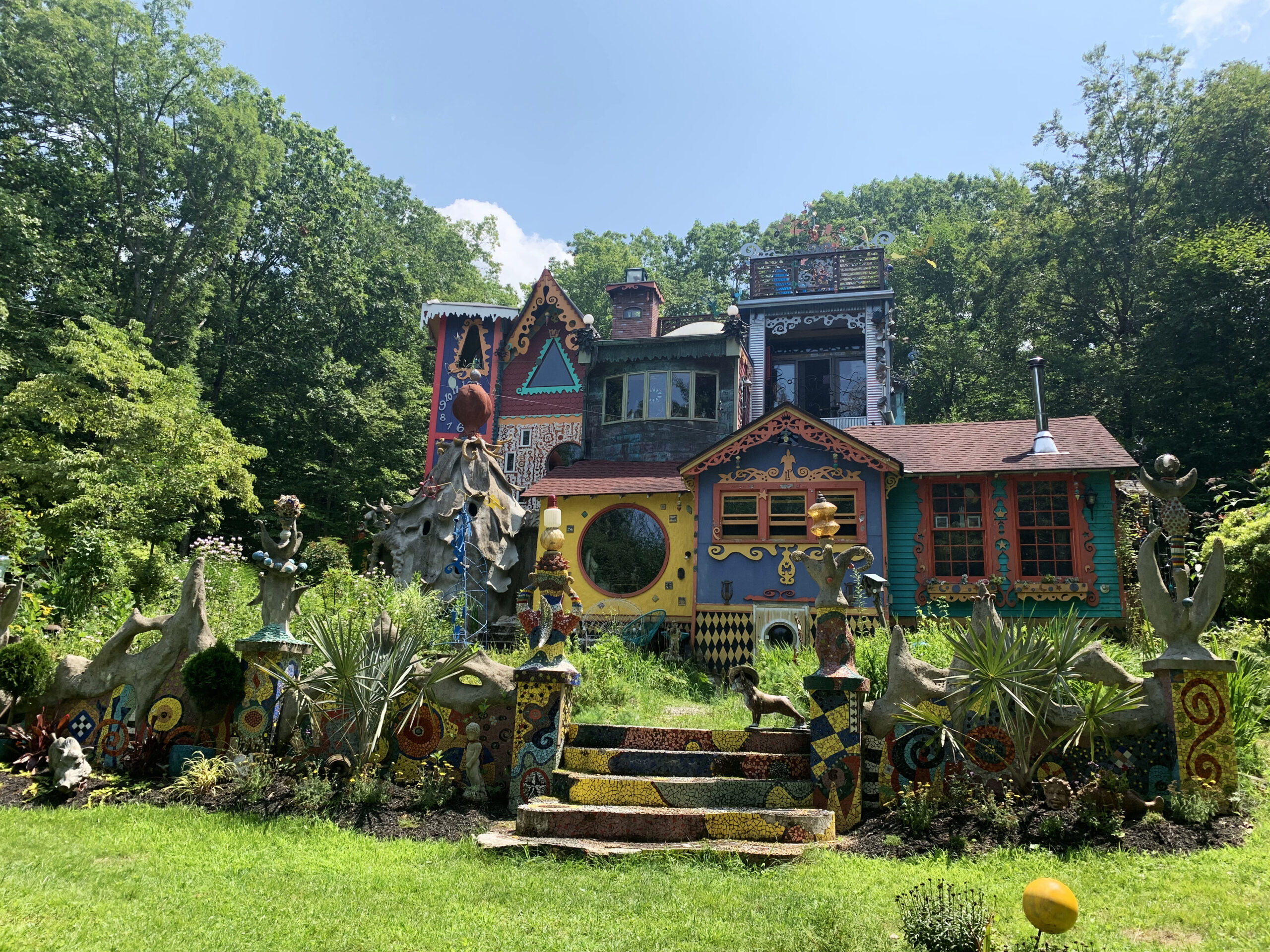
Ricky Boscarino’s Luna Parc
Sandyston, New Jersey
Richard “Ricky” Boscarino (born 1960) was born in Paterson, New Jersey to an artistic family whose lineage stretches back to craftspeople working during the reign of the Medici family in 15th-century Italy. While still in high school, Boscarino gained national attention for his RoachArt, intricate dioramas in which the young artist used American cockroaches to populate scenes at bowling alleys, beauty parlors, and grocery stores. (His depiction of the Last Supper proved controversial but not before he was featured in People Magazine and had a line of postcards published.) At the Rhode Island School of Design, Boscarino incorporated his love of insects into his study of metalsmithing and jewelry making, a practice he continues to this day.
In 1989, Boscarino began to transform a run-down property into an “expressive environment” he calls Luna Parc, located in the woods of New Jersey’s Sandyston Township. Through Boscarino’s elaborate and meticulous use of metal, clay, glass, ceramic, stone, wood, and cement, he has turned a small, dilapidated hunting cabin into a 5,000-square foot art castle, complete with turrets, winding staircases, and secret rooms. The surrounding 8 ½-acre landscape features winding mosaicked walls, bowling-ball gardens, and a pergola made of bottles, as well as a studio and residency space. Boscarino has founded a non-profit, the Luna Parc Atelier Foundation Inc., which serves as an art colony where students can receive training and help with the continuation and preservation of Luna Parc. Boscarino cites among his most important influences: Catalan architect Antoni Gaudí, the “Mad Potter of Biloxi” George Ohr, Moravian Tile Works and Fonthill Castle creator Henry Chapman Mercer, and the studio potter Beatrice Wood, also known as the “Mama of Dada.”
While Ricky Boscarino’s name does not appear in PMG, his influence can be seen in the stained glass windows found in the labyrinth outside. Boscarino taught Isaiah this “faux” stained glass window technique which uses adhesive and grout, rather than lead and solder. The artists consider each other friends and admire each other’s work.
Resources:
Biography and photos
Video by State of the Arts New Jersey (2 minutes, 2013)
